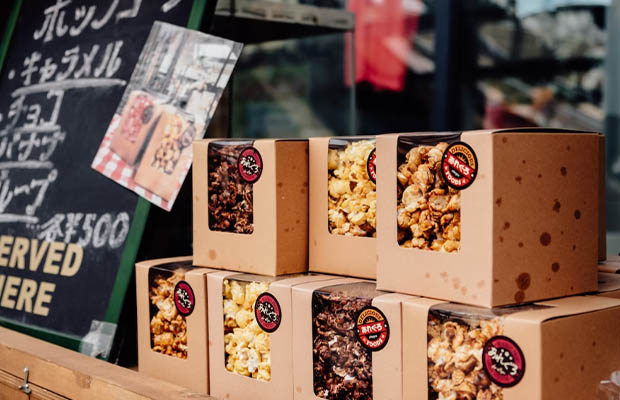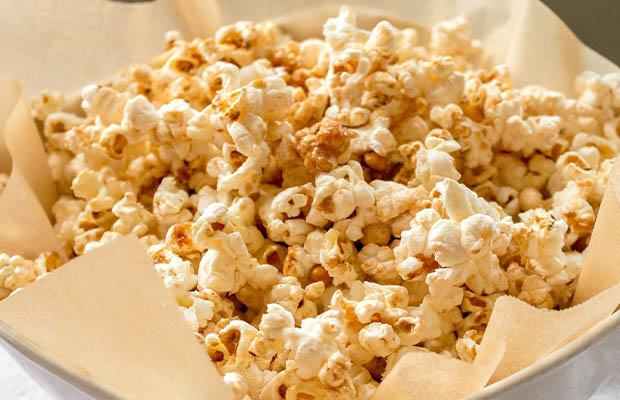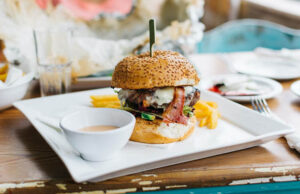One of those seemingly straightforward but intractable questions is how long does kettle corn last. The shelf life of kettle corn is determined by a variety of factors. Its freshness can be impacted by factors like where you’re keeping it and the amount of moisture in the air, but there are also general rules.
The popcorn should be kept after opening in an airtight container or ziplock bag. It takes six months for kettle corn to go bad. The popcorn can be frozen for up to three months; just break it up before eating.
For instance, to ensure that your kettle corn lasts the longest possible time, store it in a cool, dry area with low humidity levels, or even better, vacuum seal it.
Related Article: How Long Do Hamburger Buns Last?
Table of Contents
Can Kettle Corn Go Bad?
Delicious kettle corn is a favorite snack at fairs and carnivals. The temptation to consume the entire bag at once may be strong, but remember that you cannot save it for another time.
Despite the fact that most people consider kettle corn to be an “instant gratification food,” if it is not properly stored, it will go bad very quickly. The timing and rationale for throwing away unfinished popcorn kernels are covered in this blog post.
How Long Does Kettle Corn Last?
A tasty, sweet treat called kettle corn is common at many major events. It’s typically pricey, and you’re not sure if it will spoil or not. For some kettle corn advice, read this blog post.
It takes six months for kettle corn to go bad. After opening, it’s best to store the popcorn in an airtight container or ziplock bag. Popcorn can be frozen for up to three months. Before eating, break it up.
Can You Get Sick From Bad Popcorn?
Consuming expired popcorn does not present a safety risk, according to the FDA. However, it does advise keeping all food you consume in the fridge or pantry to protect it from bacteria.
When I read about the risks of consuming expired popcorn, my fascination with food expiration dates increased. You might be curious as to why someone would want to eat an old bag of popcorn that has been sitting in their pantry for a number of months or even years.
Actually, there are two possibilities: either they simply forgot it was there and discovered it again, or they were planning to throw it out anyhow and reasoned that one last snack wouldn’t hurt. However, take care before you eat anything: this article will tell you why you should toss those kernels once the date passes.
You can become ill and even die from eating expired popcorn. Microwave popcorn is flavored with a substance called diacetyl which is created when natural sugars in corn are popped. Inhaling diacetyl while working in factories that make processed food products has been linked to lung disease in those employees. The dangers of consuming expired popcorn and how to prevent them will be covered in this article.

How Long Will Popcorn Stay Fresh In A Bag?
Many people enjoy popping popcorn as a snack. However, buying in bulk can be expensive and challenging. Making your own at home is one way to cut costs on popcorn. There are numerous different recipes available, but one common recipe calls for 3 tablespoons of vegetable oil and 1/2 cup (roughly 50 popped) of unseasoned microwave popcorn kernels.
Follow these instructions to microwave the corn: Add three tablespoons of vegetable oil, half a cup of unpopped popcorn kernels, and an airtight lid to a microwave-safe container that holds two to three cups. Approximately 4 minutes per batch (you might need two batches) in the microwave will cause popping to slow down. Remove from the oven, then stand.
Kettle Corn Vs. Popcorn – Difference
Let’s compare popcorn and kettle corn now that we have discussed every aspect of each food.
Starting with the kernel itself, popcorn is made with a butterfly-type popcorn kernel whereas kettle corn is made with more spherically-shaped popped kernels.
Butterfly popcorn typically has a fluffier, softer, and more delicate flavor than other varieties of popcorn.
Popcorn is considered naturally savory while kettle corn is considered to be naturally sweet. Their preparation and seasoning with additional ingredients have an impact on this as well.
Popcorn can be air-popped or oil popped and is always lightly seasoned with salt, or heavily seasoned with another type of salty spice mix.
To prevent the sugar from burning, kettle corn is made with a mixture of sugar and oil that is constantly stirred. As a result, the popped kernel becomes extremely sweet and crunchy.
Making these two products without excessive amounts of sugar, salt, or even oil generally results in healthier products overall. Regardless, if they were prepared traditionally using “normal” ratios, they would have almost the same number of calories.
Kettle corn gets its calories from the sugar, while popcorn gets them from the oil it is popped in.
FAQs
Can You Cook Popcorn In An Air Fryer?
Now that popcorn can be popped inside air fryers, they’ve taken the world by storm. Simply preheat the air fryer for 5 minutes at roughly 400°F, add your kernels and cook them for 6-8 minutes.
This is an excellent method for avoiding the use of oil while maintaining fluffy popcorn.
How Come My Popcorn Isn’t Fluffy?
When your oil isn’t heated enough, this occurs. Oil-popped kernels are definitely a lot fluffier compared to air-popped.
You must first completely heat the oil in the pot or pan (or a specific type of popcorn maker) in order to make the best fluffy and soft popcorn. Before popping, the kernel must build up the most pressure possible.
What Advantages Come From Soaking Your Kernels?
The theory is that soaking your popcorn kernels in water for roughly 10 minutes will help add moisture to them. As a result, they will be able to apply more pressure before popping, which will result in fluffier pieces.


